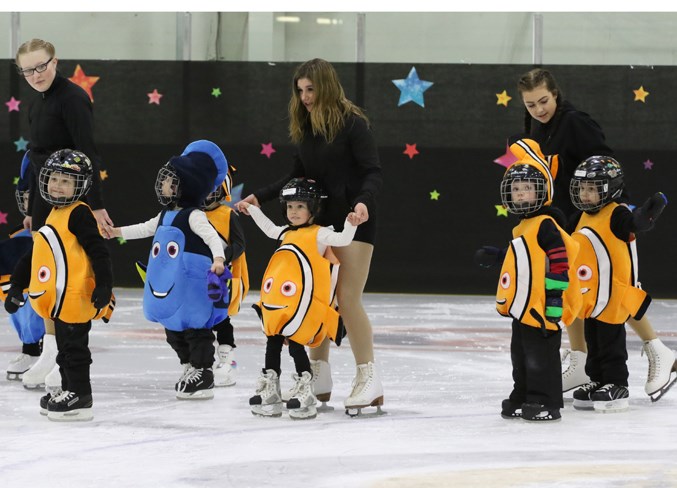Skaters and hockey players are getting a treat this spring -- the auxiliary ice at the Sportsplex is staying in for two weeks longer than normal. It's now slated to come out May 11.
Director of community services Doug Wagstaff says the decision to do that was prompted by a request from the Olds Grizzlys last November and by requests from the community over the past several years.
"This year, through the winter, we figured out ways that we might be able to juggle extending the ice with the balance of the need for dry surfaces," Wagstaff told the Albertan.
"In the end, we came to the fact that we would extend it by two weeks, but it wasn't going to be the main ice. So we took out the main ice earlier this year, but kept in the auxiliary ice."
As a result, the Grizzlys held their spring Junior A hockey camp on the auxiliary ice surface this past weekend while the Stingers lacrosse team held its home opener on the main surface.
Wagstaff says the Grizzlys accepted the compromise.
"Their preference would be to have their spring camp on the main ice, but this year, in order to accommodate extending the ice, we needed to use the auxiliary ice and take out the main ice," he said. "That was so that lacrosse had their spectator stands available."
Wagstaff said when staff crunched the numbers, they were surprised to find it didn't cost that much to extend the life of the ice for another couple of weeks.
"When we did that analysis, it was surprising that there was very little operational cost difference on utilities and expense -- for that period of time," Wagstaff said.
Staff calculated it would cost the town about $2,600 for two months. Because it's only in for an extra two weeks -- not two months -- the actual extra cost is about $700, Wagstaff said. He said that can easily be offset by the extra bookings the town will now receive for that ice.
"We looked at April, May -- even June. It didn't change a lot on our expense side for operations," Wagstaff said.
"When we did see a spike was -- we don't have anything to compare it to in July -- but we do see a spike in August. You've had a whole summer to warm up air and everything," he added.
"We do notice that there is an increased cost to operate the plant in August -- and even a little bit in September. But there isn't the same kind of increase in cost on the spring side."
Wagstaff said the big cost is during the winter months because the heating bills are higher.
"Comparatively it costs an average of $13,500 per month to operate the plant for three ice surfaces (including curling rink monthly utilities average for October, November, January, February)," he wrote in an email.
Wagstaff said some negotiating had to be done to make the extended ice work.
"There are the pressures on the dry surface. It is two weeks' impact, so we needed to work more tightly with lacrosse on their scheduling," he said.
It also meant the two lacrosse teams in town would only have access to one surface instead of two for a couple of weeks, and they'd likely have to run their practices a little later.
"But they were able to get the main surface with the stands sooner; that's sort of the trade-off," he said.



